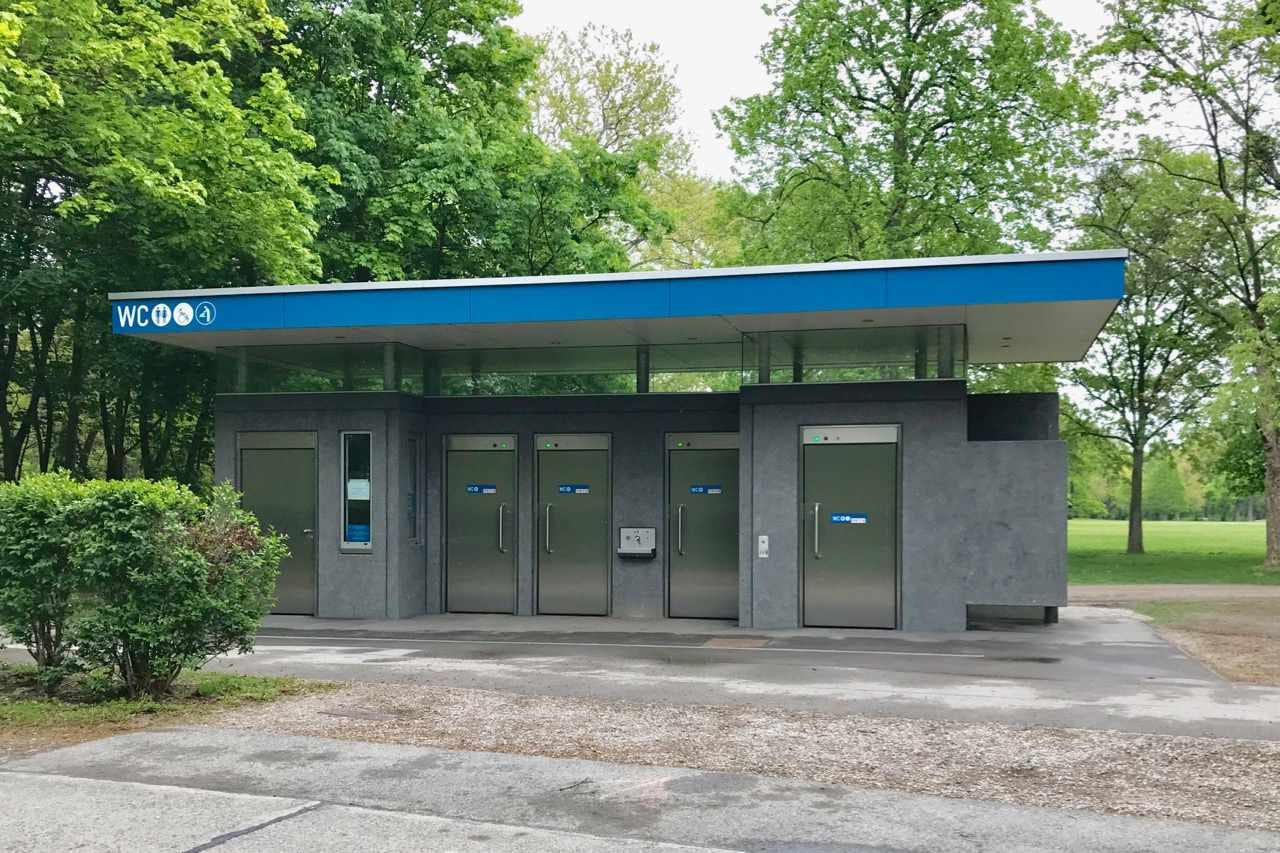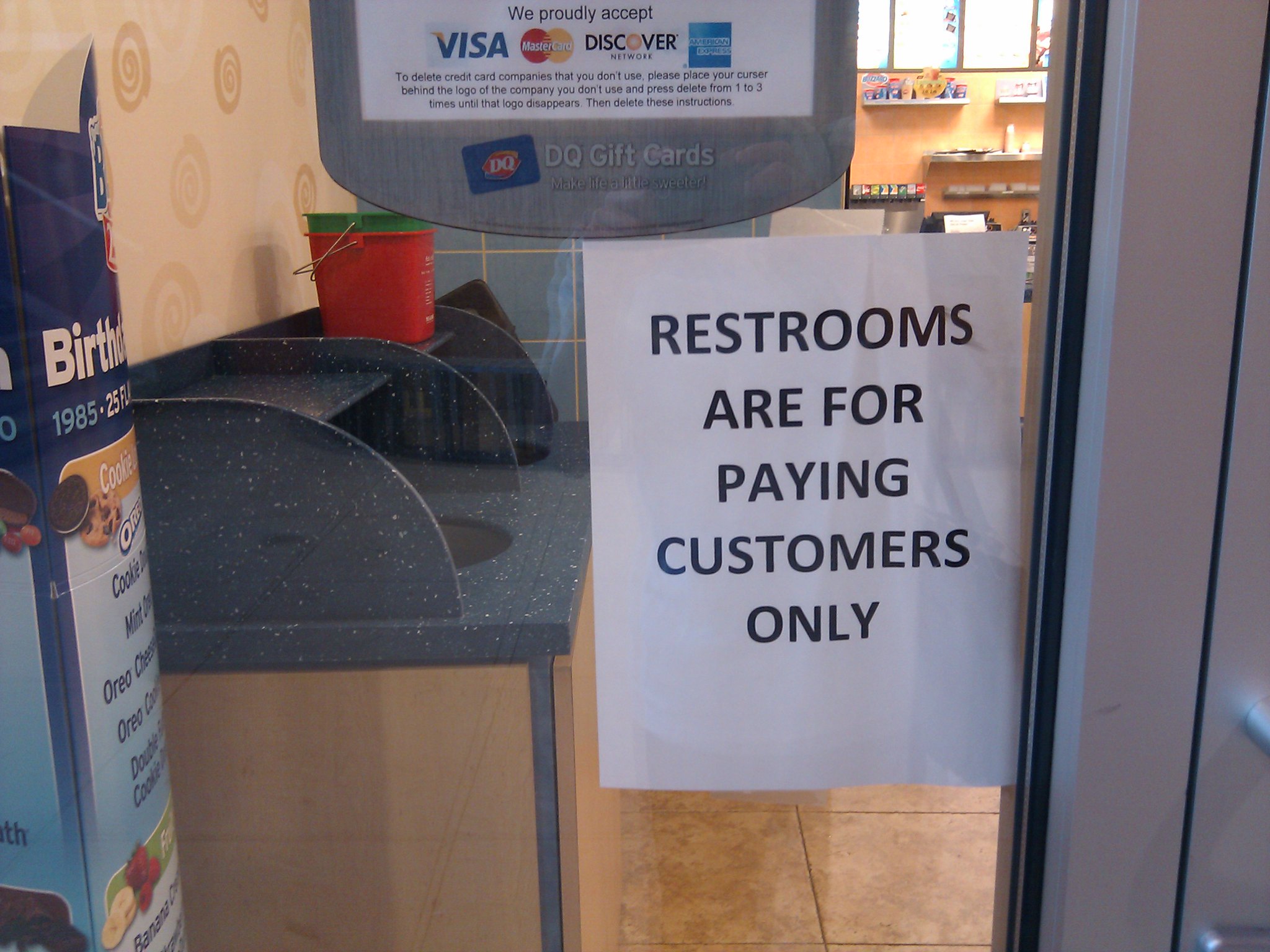Editor's note: this article originally appeared on Carbon Upfront and is republished with permission. For more on why abundant public restrooms are a critical ingredient in walkable, transit-friendly towns, check out this article from Streetsblog MASS.
In 2018, two African-American men were arrested after asking to use the bathroom in a Philadelphia Starbucks. It caused outrage and terrible publicity for the company. The chairman at the time, Howard Schultz, apologized and promised, "We don’t want to become a public bathroom, but we’re going to make the right decision a hundred percent of the time and give people the key."
In 2025, Starbucks is in trouble. Prices are up, sales are down, baristas are unionizing, and it has forgotten its original role as a “third place” to use Ray Oldenburg’s term. They have flown in a new CEO (literally, he commutes by private jet), Brian Niccol, who has introduced a new code of conduct which says, “Starbucks spaces are for use by our partners and customers – this includes our cafes, patios and restrooms.” This is causing outrage again among people who claim “the policy could disproportionately affect vulnerable groups, such as homeless individuals or those unable to afford a purchase but in need of restroom access.”

But what is truly outrageous is that citizens are forced to use private washrooms because there are almost no public ones in North America. There used to be; it was a public responsibility. Harvey Molotch, author of Toilet: Public Restrooms and the Politics of Sharing, told the Washington Post in 2018,
"Anxieties over vandalism and public sex led to their demise, along with resentment at having to pay routine janitorial costs. In effect, because of fear of what some people might do, everyone is made to suffer."
And a lot more people are suffering as the population ages. Older men and women need to use the bathroom more often. My wife complains that it is much more difficult for women; men can pee anywhere, but pregnant and menstruating women are often desperate for a bathroom and don’t have the option of sneaking down an alley.
Authorities say providing public washrooms can't be done because it would cost "hundreds of millions" but never have a problem spending billions on the building of highways for the convenience of drivers who can drive from home to the mall where there are lots of washrooms. The comfort of people who walk, people who are old, people who are poor or sick — that doesn't matter. Molotch concludes:
“That there is so often no way to satisfy a necessary bodily function is symptom of the larger callousness — of ignoring basic human needs. The trouble is a dearth of civic responsibility. We don’t need just a better restroom. We need a better country.”

In many cities in Europe, in Japan or Singapore and parts of China, there are public washrooms everywhere. According to the Public Toilet Index, New York City has four toilets per 100,000 people; in Iceland, there are 56.

Some of the nicest and cleanest I have been in were in China, because every one of them had an attendant who cleaned the counter and checked the toilet after every use. It puts a lot of people to work. They even had inspirational messages over the urinals.

The supply of clean water and the removal of sewage and human waste are two of the most important functions government provides for its citizens, but in the public realm, the working ends of each system, the water fountain and the toilet, are apparently no longer public responsibilities. Water is now sold in bottles, and Starbucks became the public bathroom.
That's wrong. This is why we pay taxes — for public services that meet human needs.






